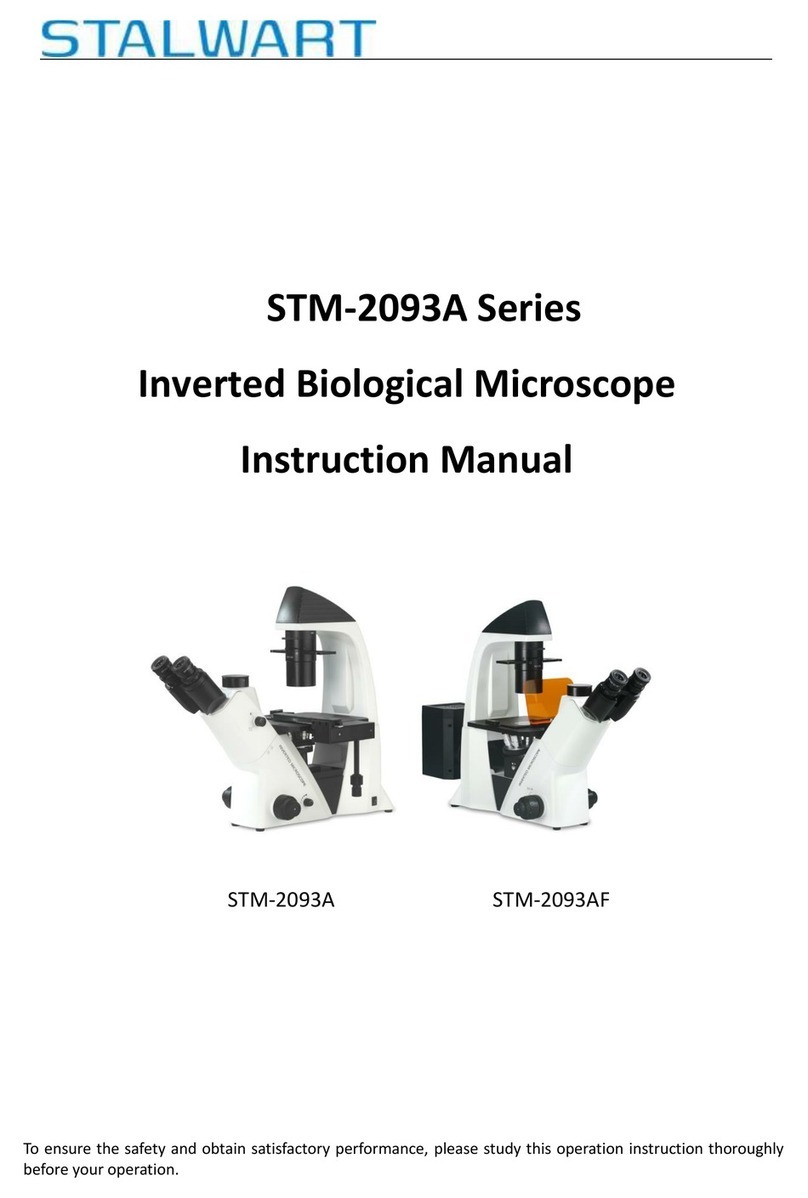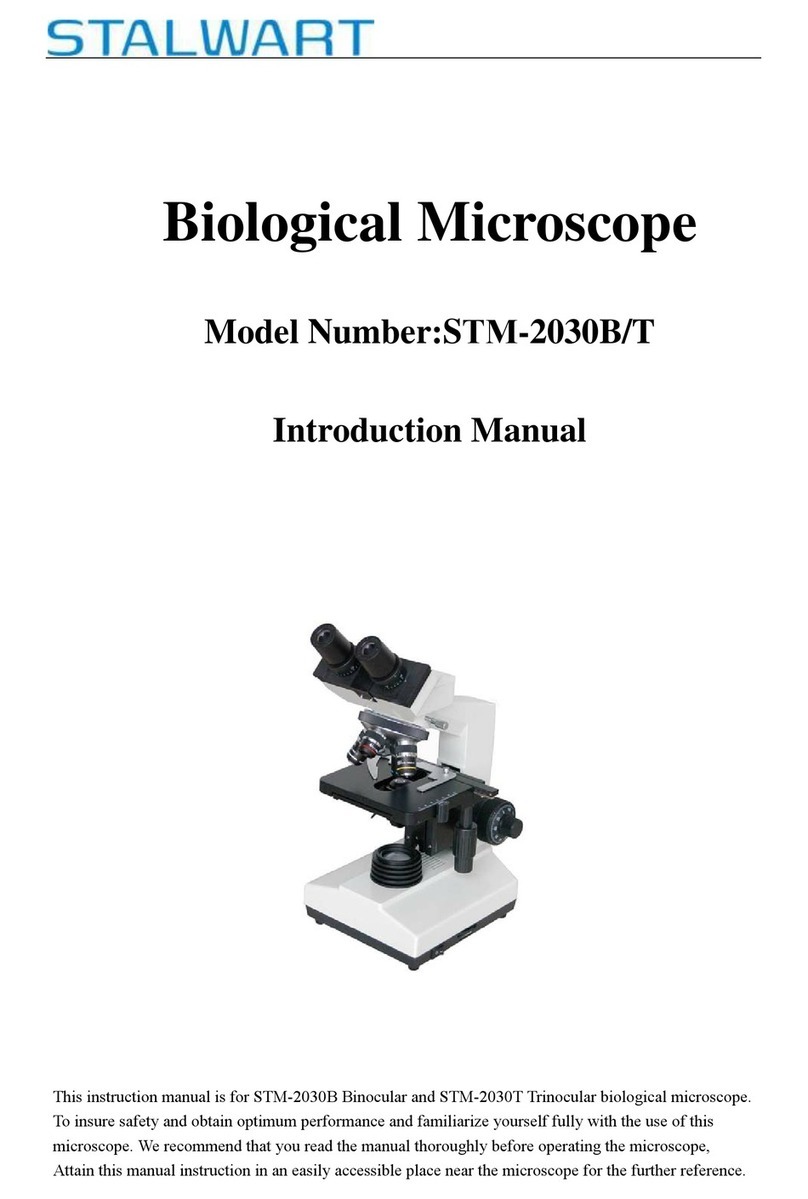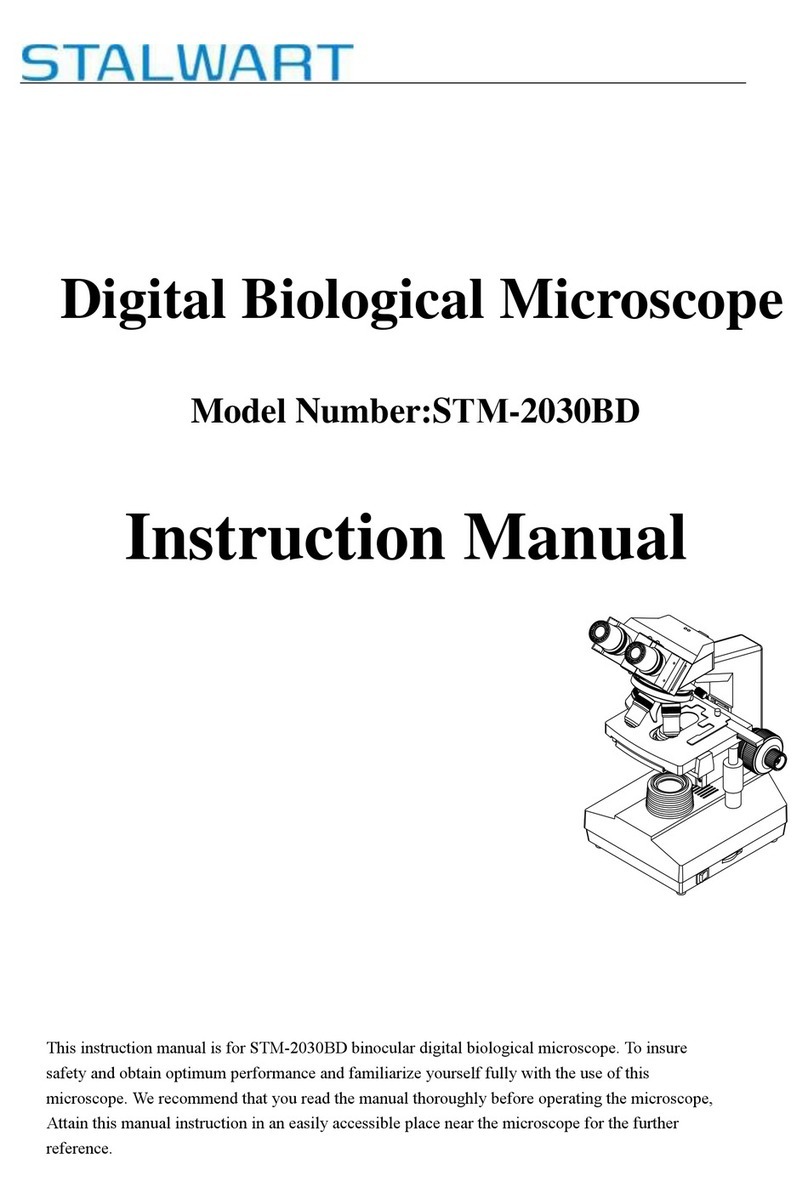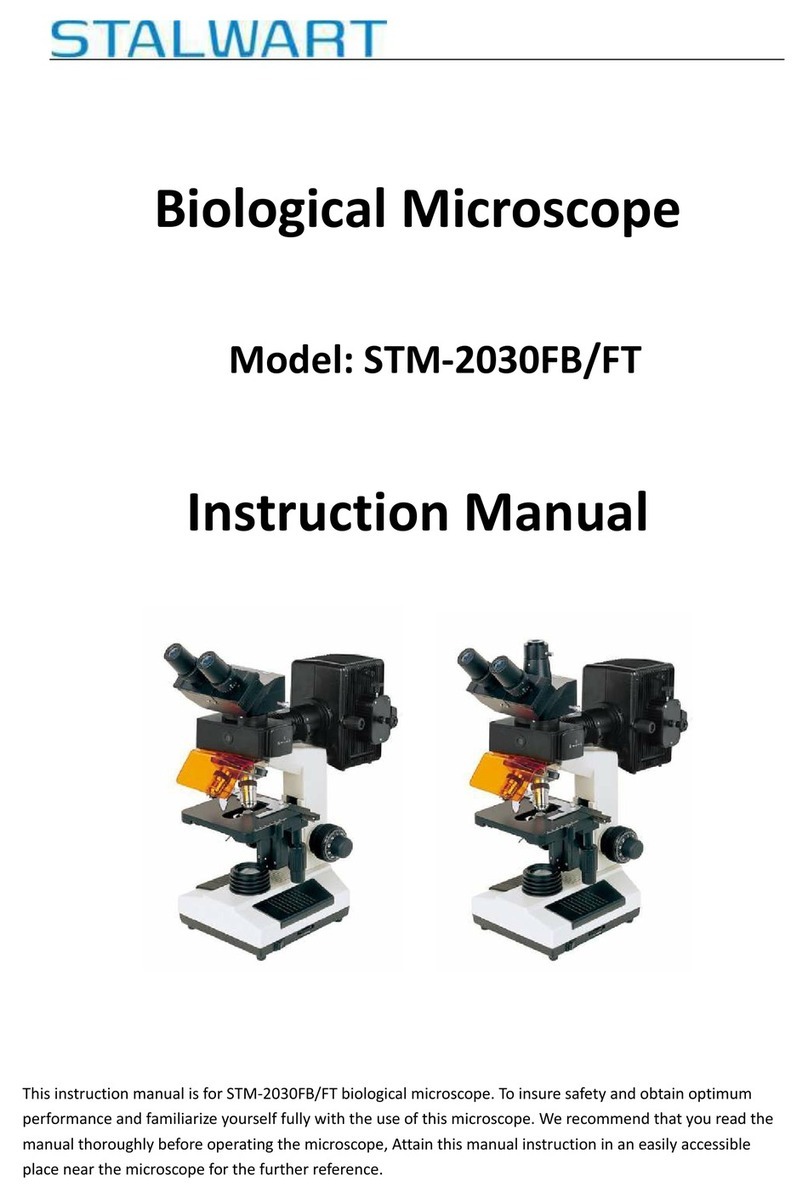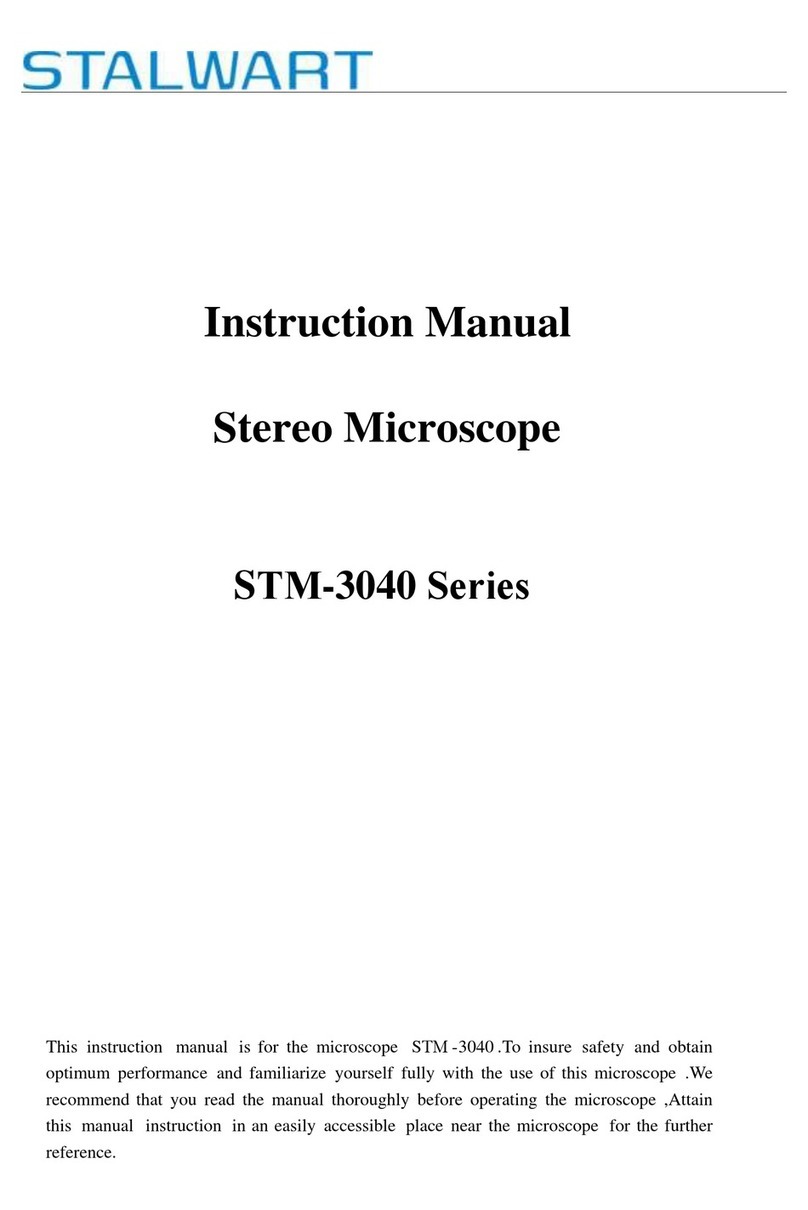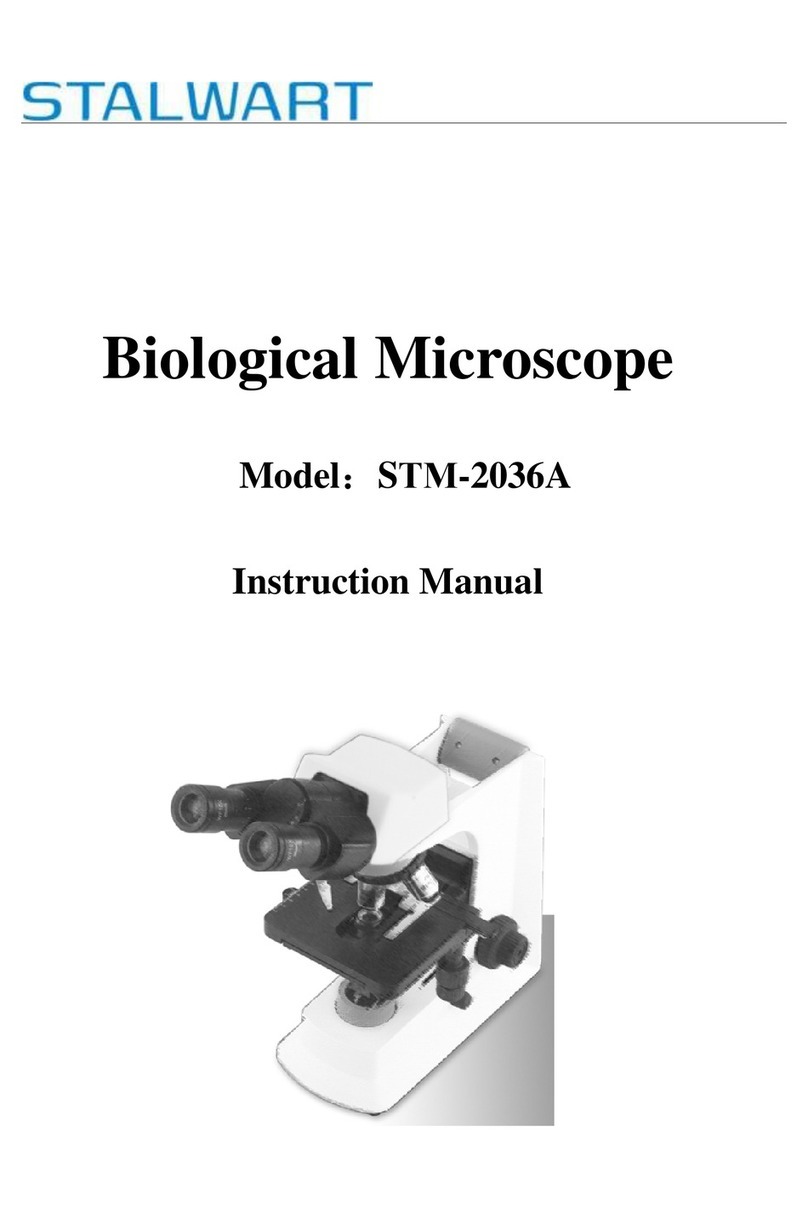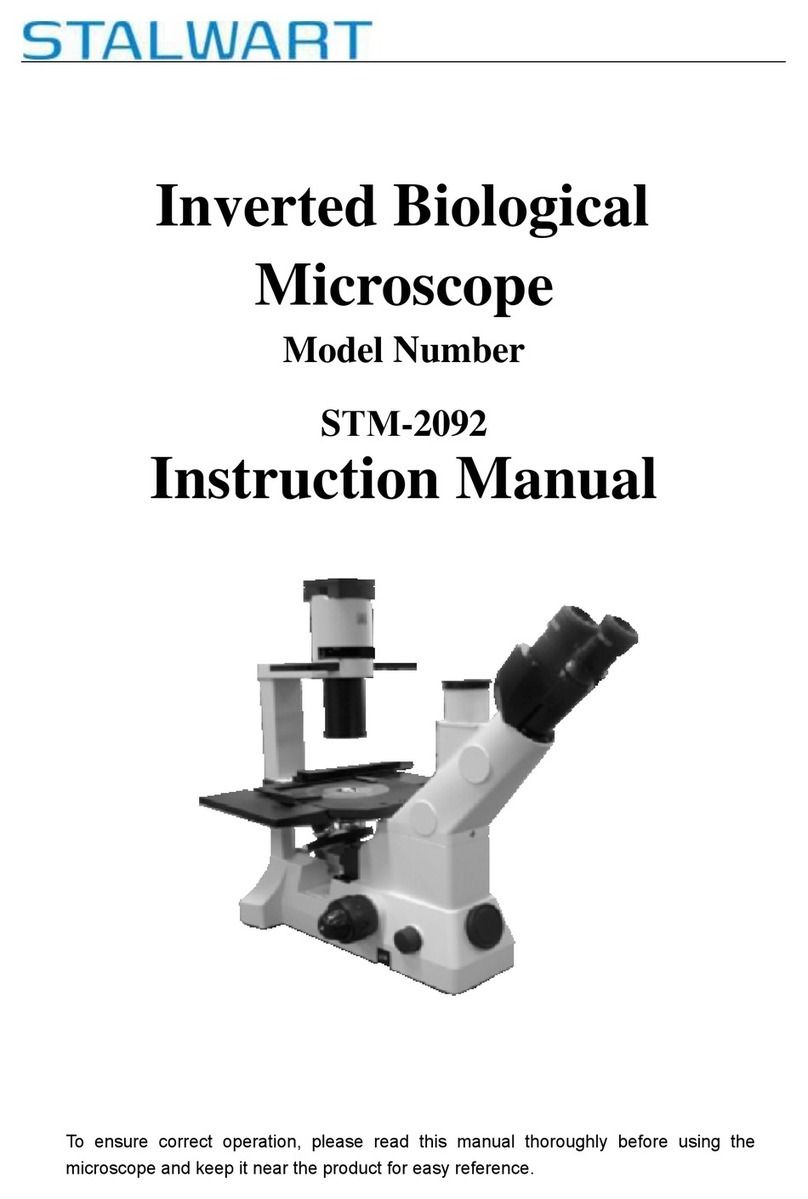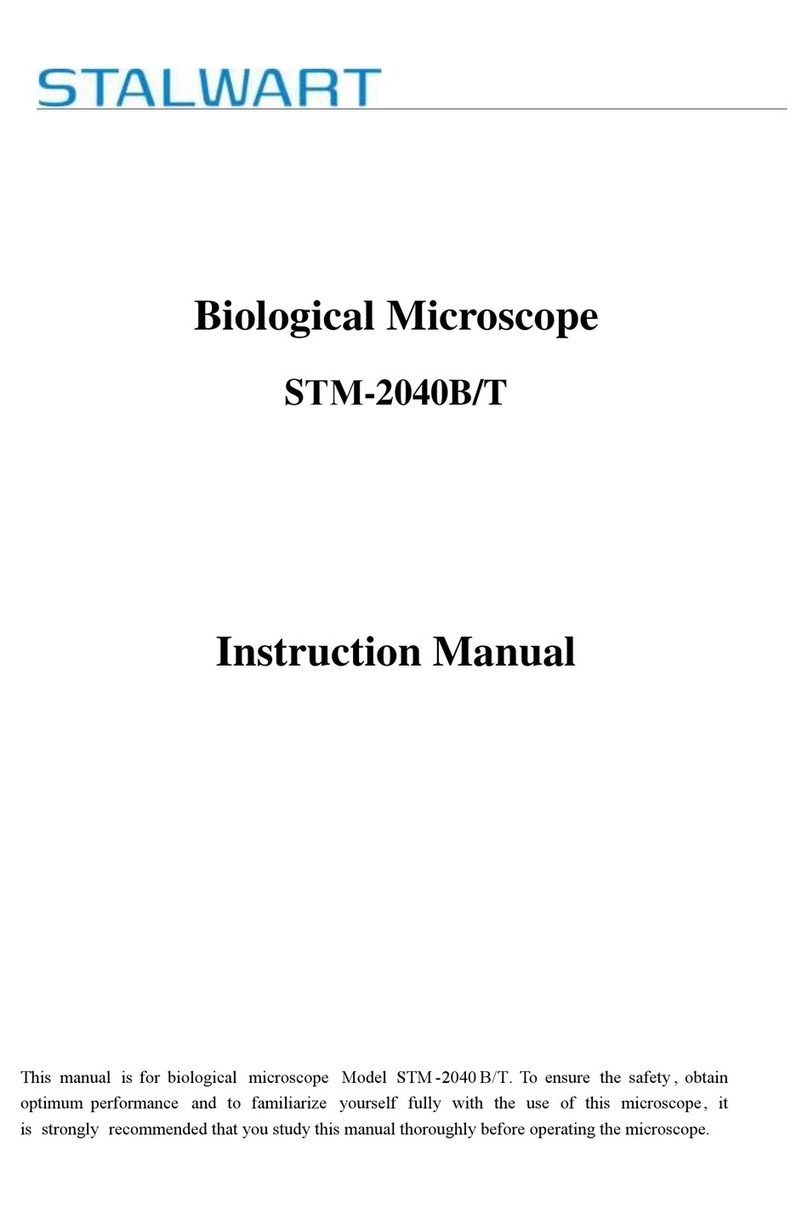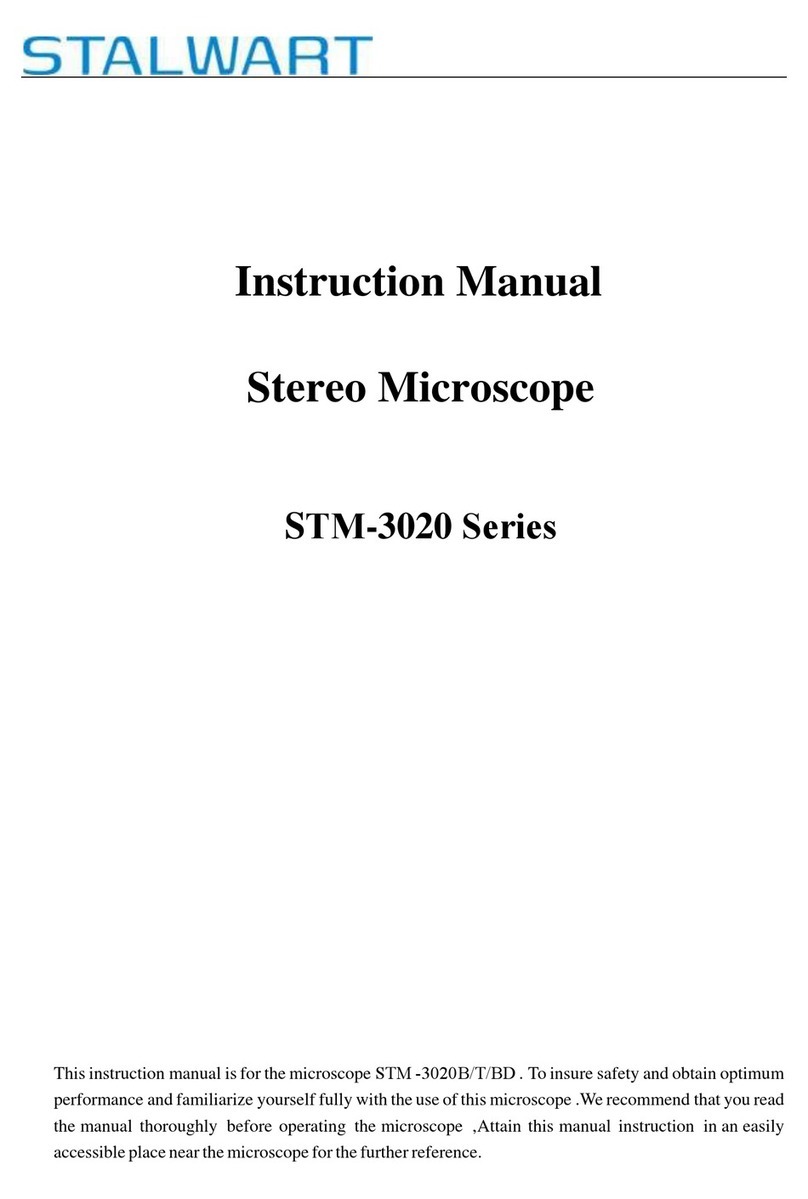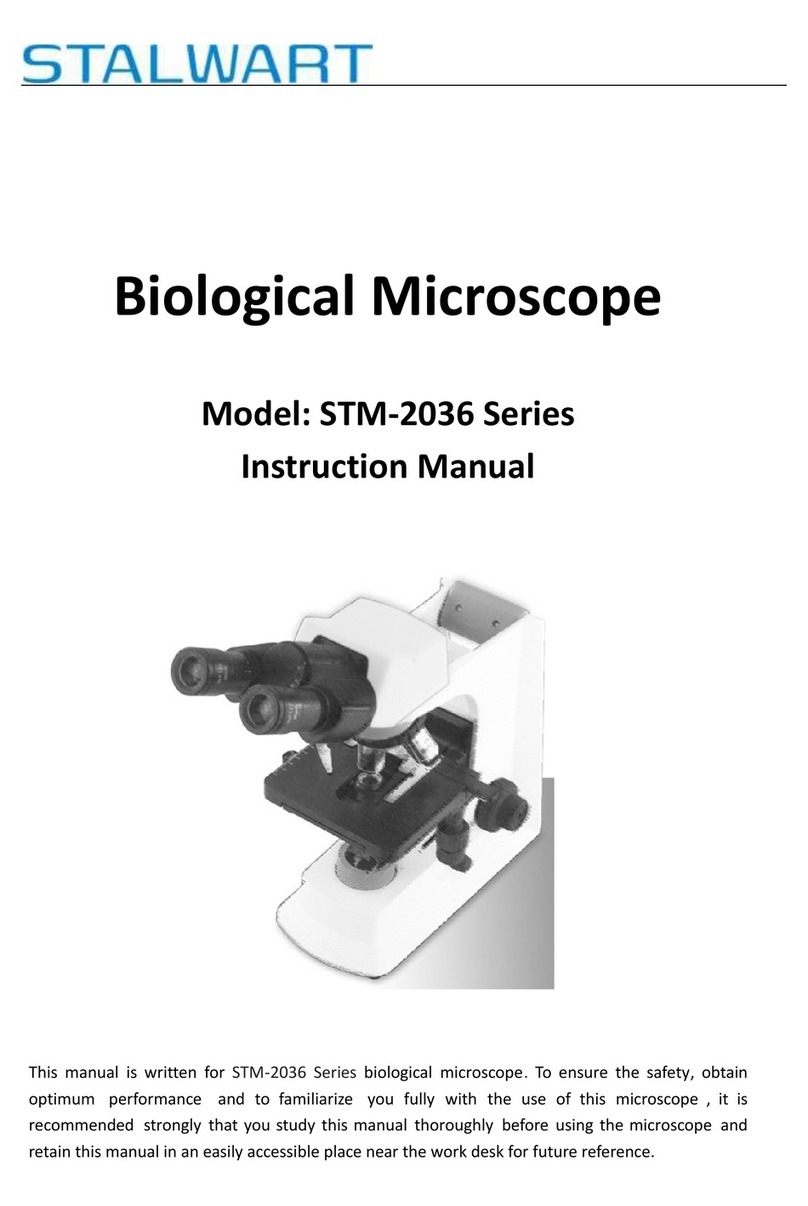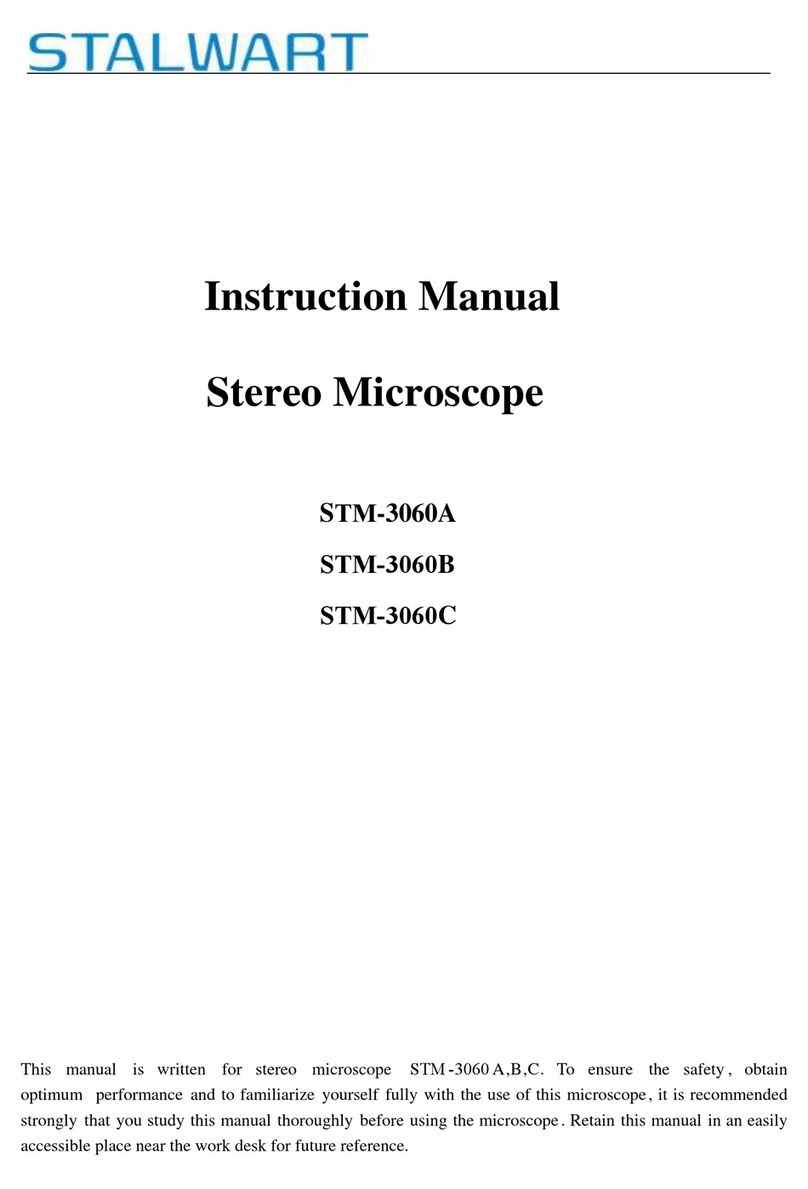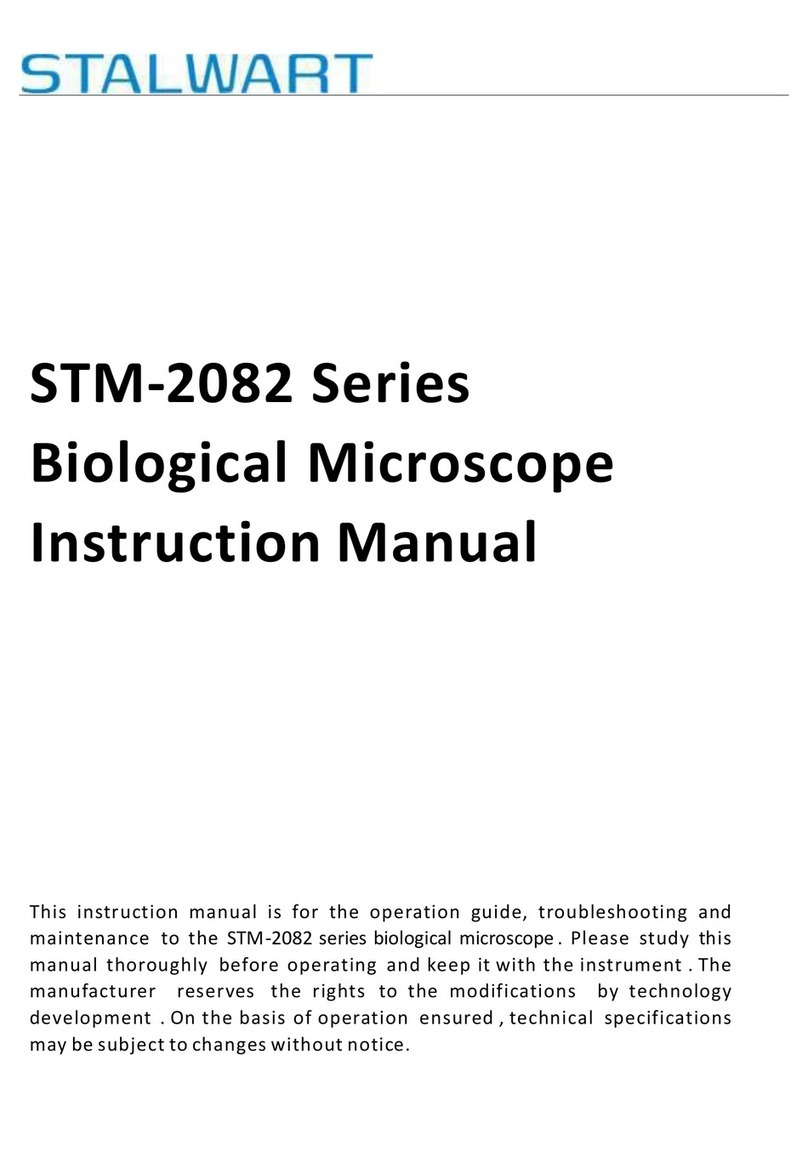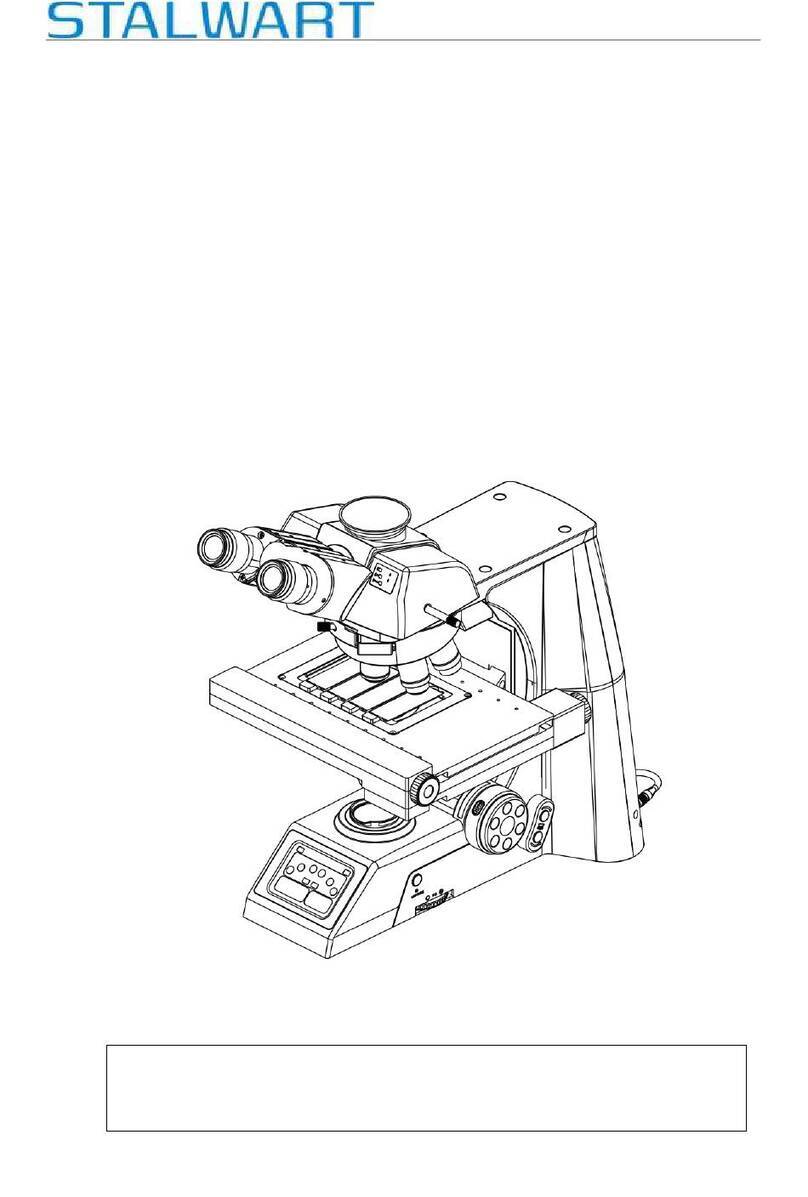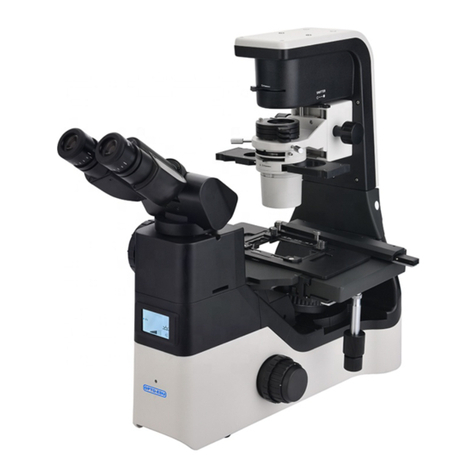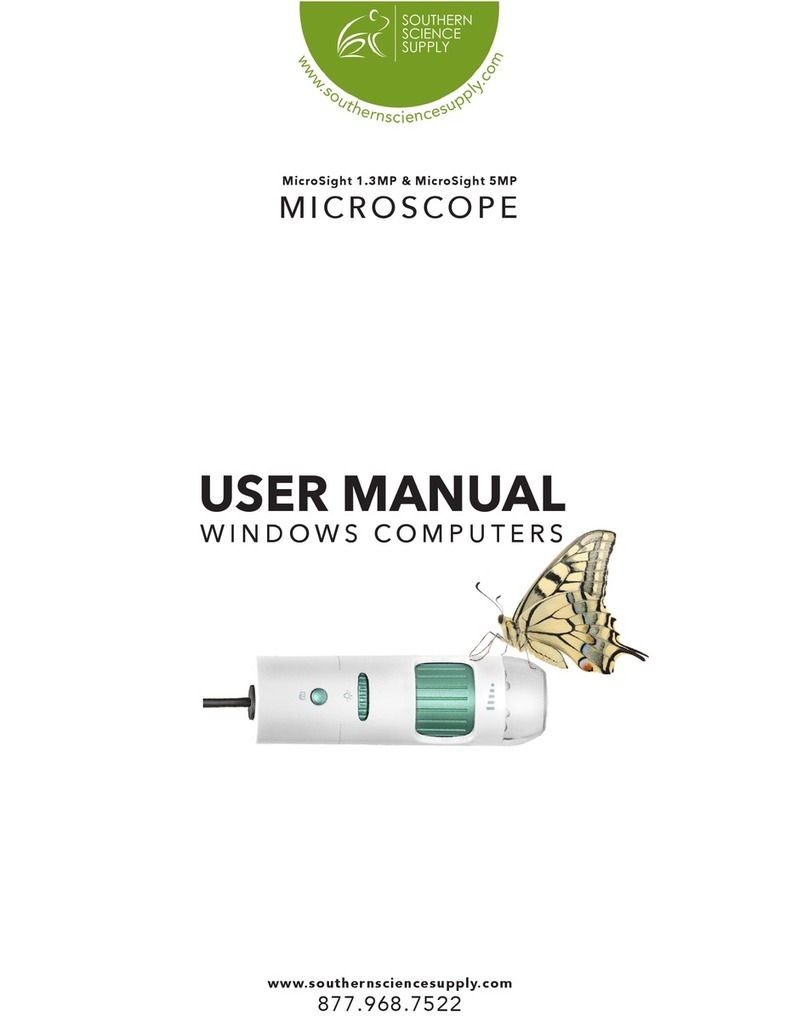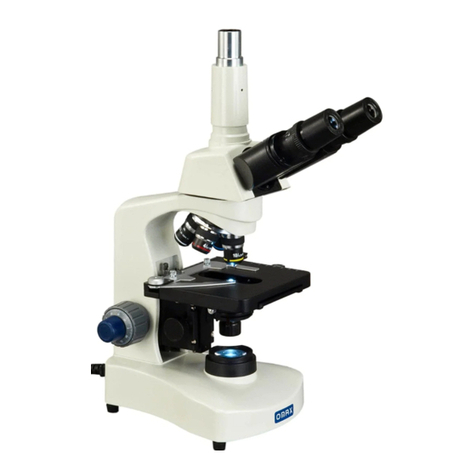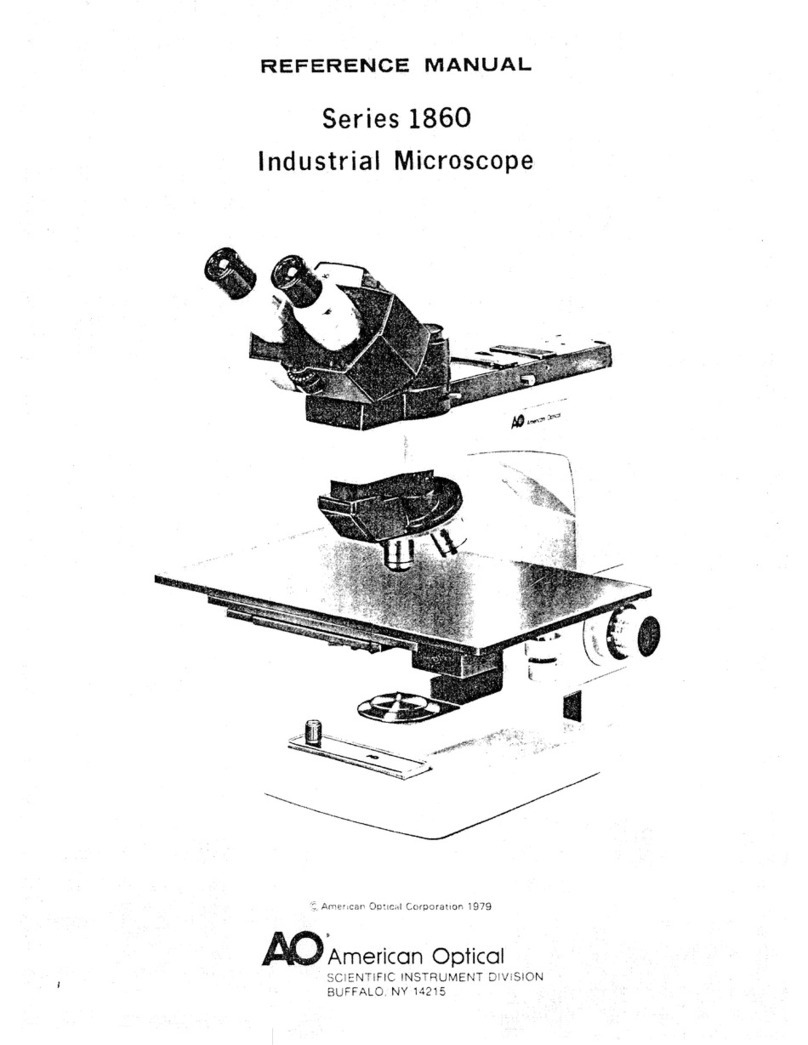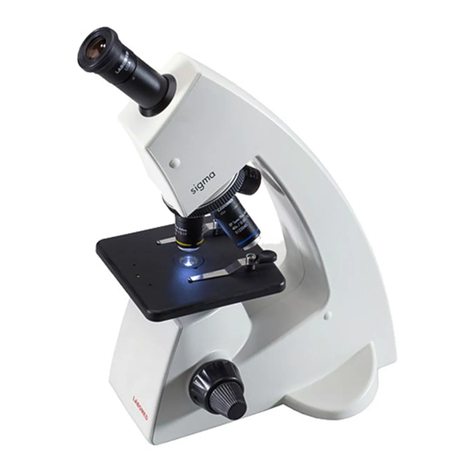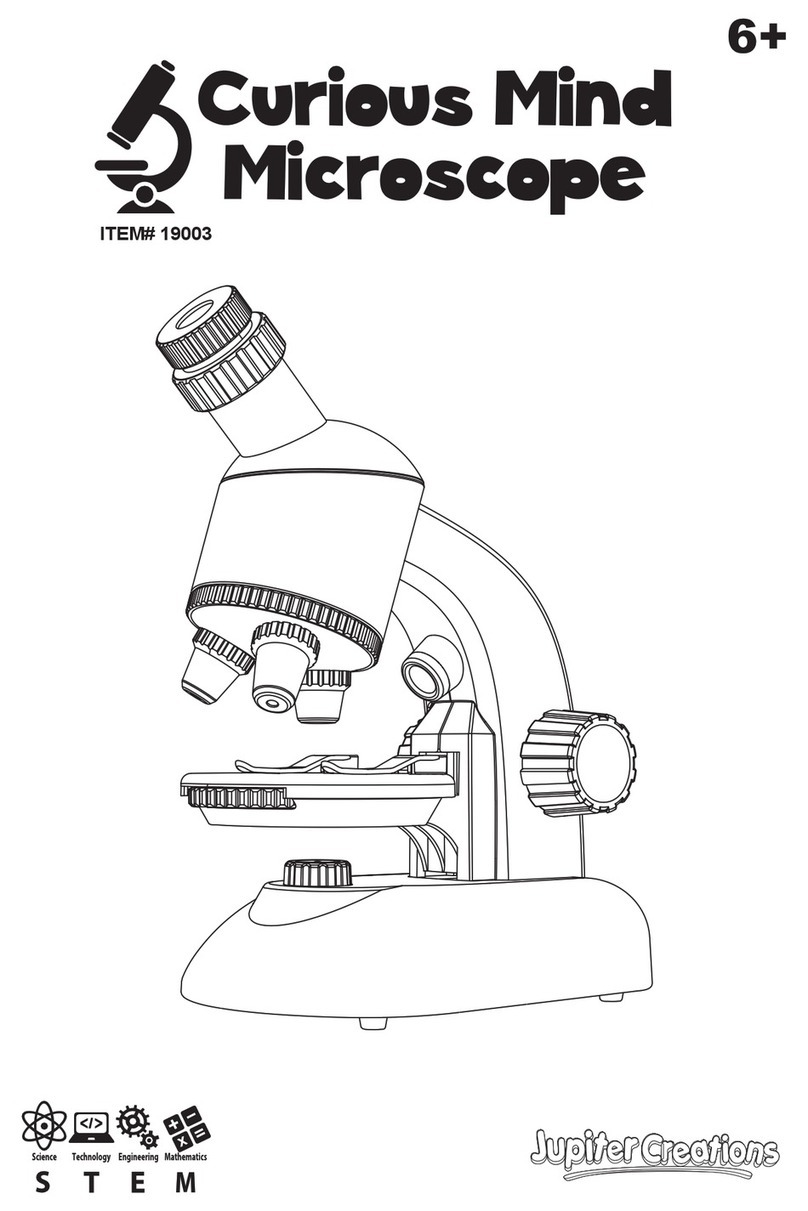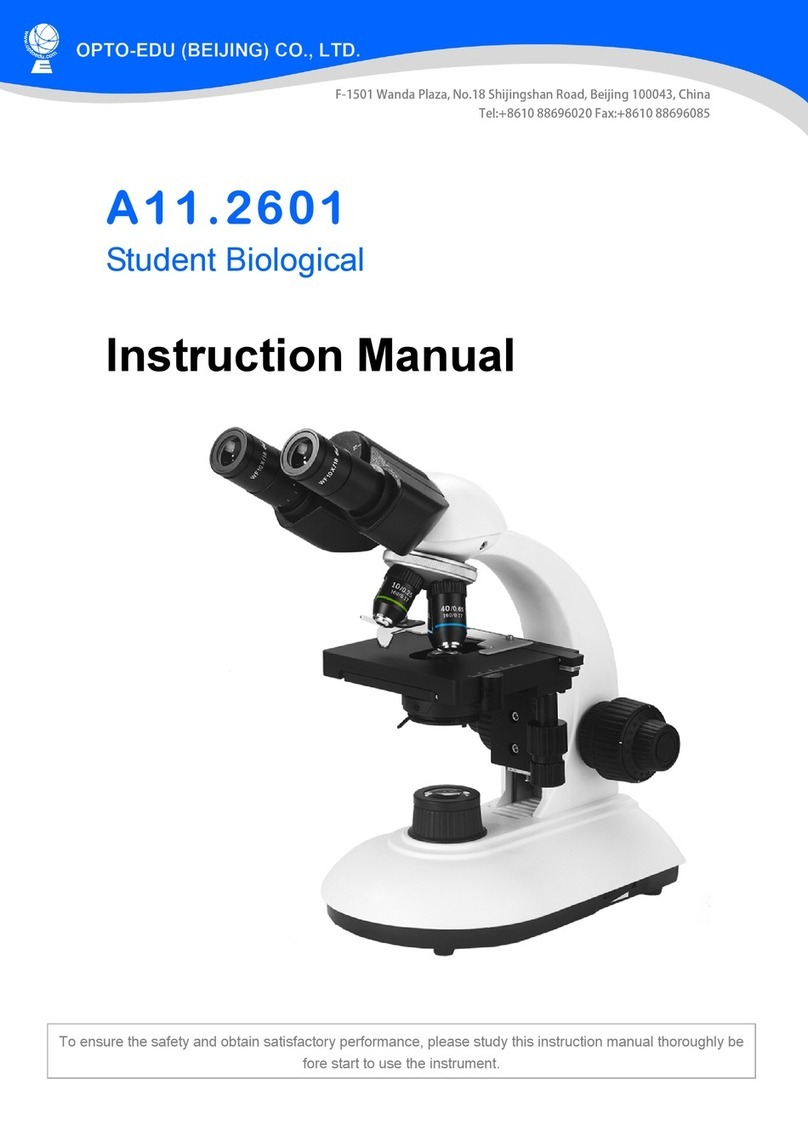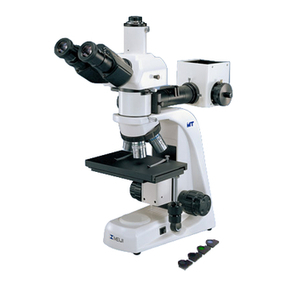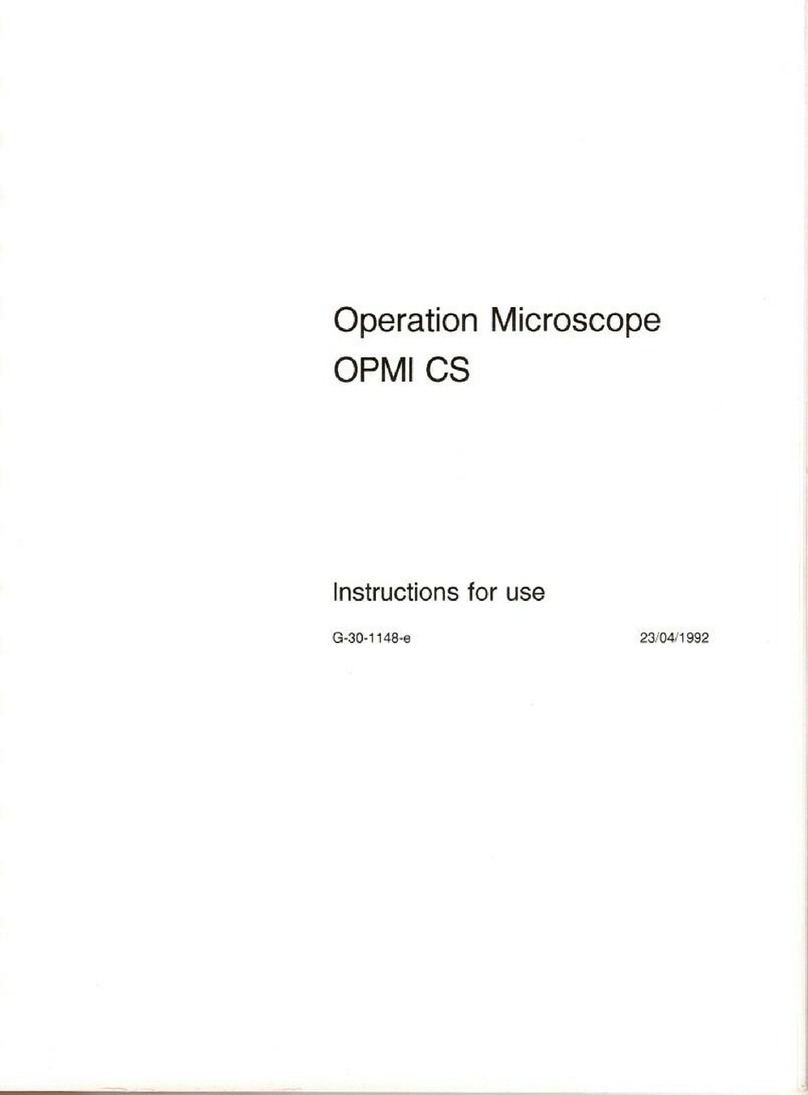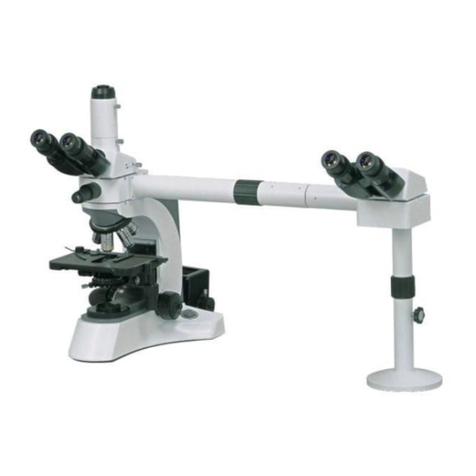2. Place the specimen in the center of the stage, keeping the cover slip upward, and then
nip it with the specimen holder.
3. Search the image by lower magnification objective, turn the longitudinal and transversal
adjustment knobs which on the mechanical ruler to move the specimen onto the center of
the field of view. Then replace with higher magnification objective, turn the fine focusing
knob to sharpen the image.
4. When using 100X oil objective, add the cedar oil between the objective and specimen.
5. You should be aware of the cleaning procedures to be used after the use of oil. Wipe oil
from the oil immersion objective, and from any other parts in need of cleaning. Clean lenses
immediately with xylene after use. Leaving oil on the lens may lead oil to seep behind and
harden on the inside of the lens.
★To obtain a bright and clear image, it is import to adjust the illumination system. The
condenser position and the iris diaphragm size should match with objectives of different
magnifications. Turn the condenser focus knob to shift the condenser. It needs to raise the
condenser when using the high magnification objective, and to decline when using the low
magnification one.
★The aperture diaphragm is used to adjust the numerical aperture instead of brightness.
Generally, setting the size of the aperture diaphragm at 70%~80% of the numerical aperture,
you can obtain a clear image with enough contrast.
★ For observing a batch of specimen of the same type, use the limit bolt to locate general
position of the stage to simplify operation. In this way, the specimen can come into focus
rapidly just by turning the coarse focusing knob.
Note: specimens of the same type means they are same in the thickness of slide, cover
slip and specimen slice.
7. Maintenance
1. Carefully open the box, avoid the accessories, like lens, dropping to ground and being
damaged.
2. All the lenses have been well checked and adjusted. It is forbidden to disassemble them by
user self.
3. The nosepiece and coarse/fine focus unit have a compact and precise frame, so please
don’t disassemble them as possibly as you can.
4. Keep the instrument clean, wipe dust regularly, apply a little non-corrosive grease in the
sliding parts and be attention to avoid contaminating the optical elements especially.
5. Place the instrument in a cool, dry position. When not using the microscope, keep it covered
with a dust helmet. Make sure the lamp socket is cool before covering the microscope.










